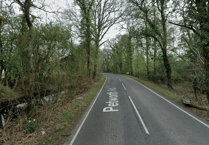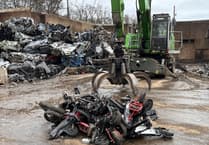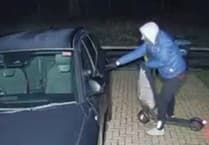A PILOT scheme involving the fire service, the ambulance service and the police is saving both lives and taxpayers’ money.
The project has seen Hampshire Fire and Rescue Service team up with South Central Ambulance Service (SCAS) to help them get to patients who need assistance quickly. This was previously a situation which the police would have assisted with.
During the one-year trial firefighters attended 1,347 calls, saving the ambulance service an average of 20 minutes on each occasion. This equates to 56 working days.
This means that ambulance crews are able to access their patients quickly and get back on the road again to take a casualty to hospital or attend another incident.
Assistant chief officer Stew Adamson, who is in charge of blue light collaboration, said: “This is a fantastic example of how blue-light services can work together to protect the people of Hampshire and provide the public with the best possible value for money.
“We are often able to attend these incidents quicker than the police which means the ambulance can get to the people who need help quicker and the police have more time to fight crime.”
He added: “We are also better equipped to gain entry with ladders and various bits of kit. On some occasions, we have been able to gain access through windows which again leads to less delays – and less stress for the public.”
The fire service was the first to invite the police to move into its headquarters at Eastleigh, which they did in November 2015.
They have also been opening their stations to police officers who now have a presence in several of the organisation’s facilities, helping the two emergency services establish closer working relationships and providing exceptional value for money.
It is not just about buildings, the close links between the two services is represented in ways such as having a police officer on the fire service-run arson task force, cross-service training to upskill firefighters and police officers and even sharing a corporate photographer.
The fire service and police also take part in regular emergency training sessions to ensure they each understand each other’s roles and have close relationships which could prove vital in a disaster situation.
The importance of the relationship between the fire service and the police is reflected by Hampshire Fire and Rescue Authority, who were among the first to invite the police and crime commissioner to attend meetings.
The county’s fire service has always led the way on collaboration and has had aworking partnership with the SCAS for 13 years – many other counties are now rolling this out.
Hampshire Fire and Rescue responds to more than 10,000 calls per year – more than any other fire service.
In addition, all engines are now equipped with immediate emergency care packs and firefighters have received additional training. This enables firefighters, often the first on the scene, to deliver potentially life-saving care in the vital minutes following an incident and help stabilise a casualty before the ambulance crews arrive and are able to take over.
In January, the fire service rolled out a new scheme to provide medical bags, containing defibrillators, to all fire officers for use on and off duty.
Mr Adamson added: “Blue-light collaboration is all about providing the best service possible for the public and we are committed to finding new and innovation ways of working together.”




